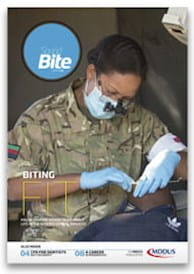
HUNDREDS of children and vulnerable people undergo dental treatment across the UK every day, making dentists ideally placed to look out for signs of abuse or neglect.
All dentists – including trainees – have a professional duty to raise concerns, but deciding if and when to take action can prove challenging for even experienced clinicians. Despite the difficulties it presents, suspicions should never be ignored. Failing to act can have serious implications for those in harm’s way and dentists could face sanctions from the General Dental Council.
Indeed, the GDC has renewed its focus on this area recently by making safeguarding children, young people and vulnerable adults key learning areas, including them as recommended continuing professional development (CPD) topics.
The regulator said the move is designed to increase awareness of the issues “so that all dental professionals feel confident and equipped to raise any concerns about abuse or neglect of vulnerable people”.
The GDC’s guidance Standards for the Dental Team states: “You must raise any concerns you may have about the possible abuse or neglect of children or vulnerable adults. You must know who to contact for further advice and how to refer concerns to an appropriate authority such as your local social services department.”
It adds: “You must find out about local procedures for the protection of children and vulnerable adults. You must follow these procedures if you suspect that a child or vulnerable adult might be at risk because of abuse or neglect.”
One useful resource is the Child protection and the dental team (CPDT) website which offers a range of advice and learning materials. Although aimed mainly at dental teams providing primary care in England, much of the information applies across the UK and there is supplementary information for practitioners in Scotland and Wales.
CPDT offers practical advice on recognising and responding to various forms of abuse. For example, orofacial trauma occurs in at least half of children suffering from physical abuse, including bruising, abrasions and lacerations, eye injuries and intra-oral injuries. There is a list of useful yes/no questions that can be kept in the surgery (either printed out or incorporated into electronic records) to act as a prompt.
These are:
- Has there been delay in seeking dental advice, for which there is no satisfactory explanation?
- Does the history change over time or not explain the injury or illness?
- When you examine the child, are there any injuries that cannot be explained?
- Are you concerned about the child’s behaviour and interaction with the parent/carer?
If the answer to any of these questions is “yes”, dentists are advised to “discuss with a senior colleague and follow local child protection procedures”. If all the answers are “no” then it says the patient can be diagnosed and treated as normal.
CPDT encourages clinicians to ask the child/vulnerable person about the cause of any injuries and to allow them to talk if they volunteer information about abuse. It is advised to avoid asking leading questions and to respond calmly and kindly with a non-judgmental attitude.
It adds: “A child who makes a disclosure of abuse should always be taken seriously. If requested to keep a secret, you should not do so but should explain that you may have to share information, but will explain with whom and when it will be shared.”
The national Childsmile oral health initiative operates in Scotland and delivers training courses which cover child protection issues. Its website also links to the Scottish Government’s Getting It Right For Every Child (GIRFEC) programme which includes the Named Person system which aims to make a named person available to offer advice and support to every child from birth to age 18.
The Scottish Dental Clinical Effectiveness Programme (SDCEP) has published guidance Prevention and Management of Dental Caries in Children which advises on child protection, including the issue of dental neglect. When children or vulnerable patients present with a large amount of dental caries, it recommends practitioners encourage the parent/carer to take responsibility and involve them in the care planning progress, offering advice and support where appropriate.
Where a parent/carer fails to comply, it states this may be indicative of dental neglect, but cautions: “Reaching this conclusion will call for particularly careful judgment. ”
If you have concerns but are unsure of how to proceed, it can be useful to discuss the issue with a colleague or an MDDUS adviser. Often there are concerns that raising the alarm will result in a patient complaint or even aggression towards practice staff, but remember that the main concern should always be the patient’s best interests, particularly when it involves a child or vulnerable person.
Joanne Curran is an associate editor of SoundBite
This page was correct at the time of publication. Any guidance is intended as general guidance for members only. If you are a member and need specific advice relating to your own circumstances, please contact one of our advisers.
Read more from this issue of Insight Primary

Save this article
Save this article to a list of favourite articles which members can access in their account.
Save to library